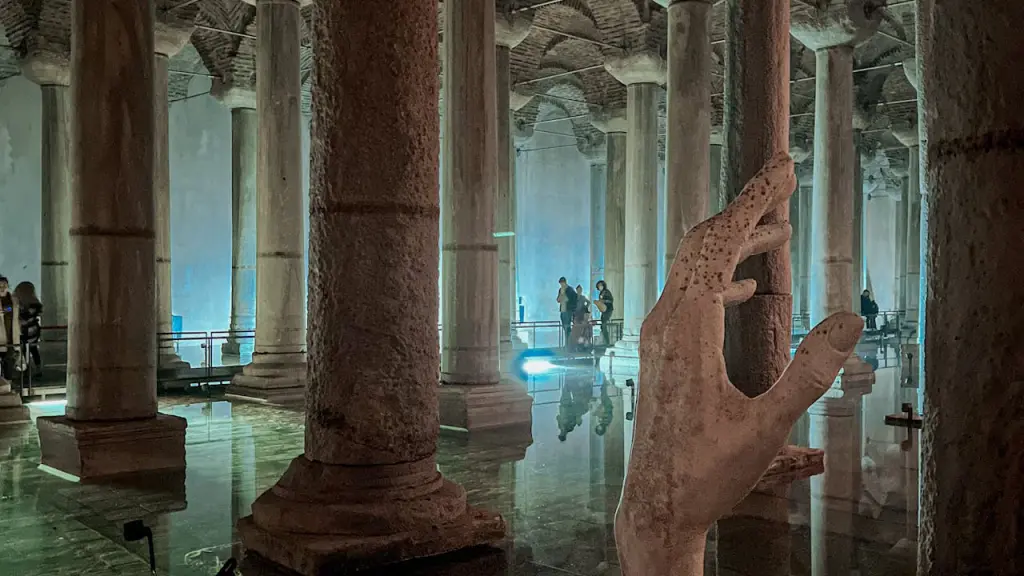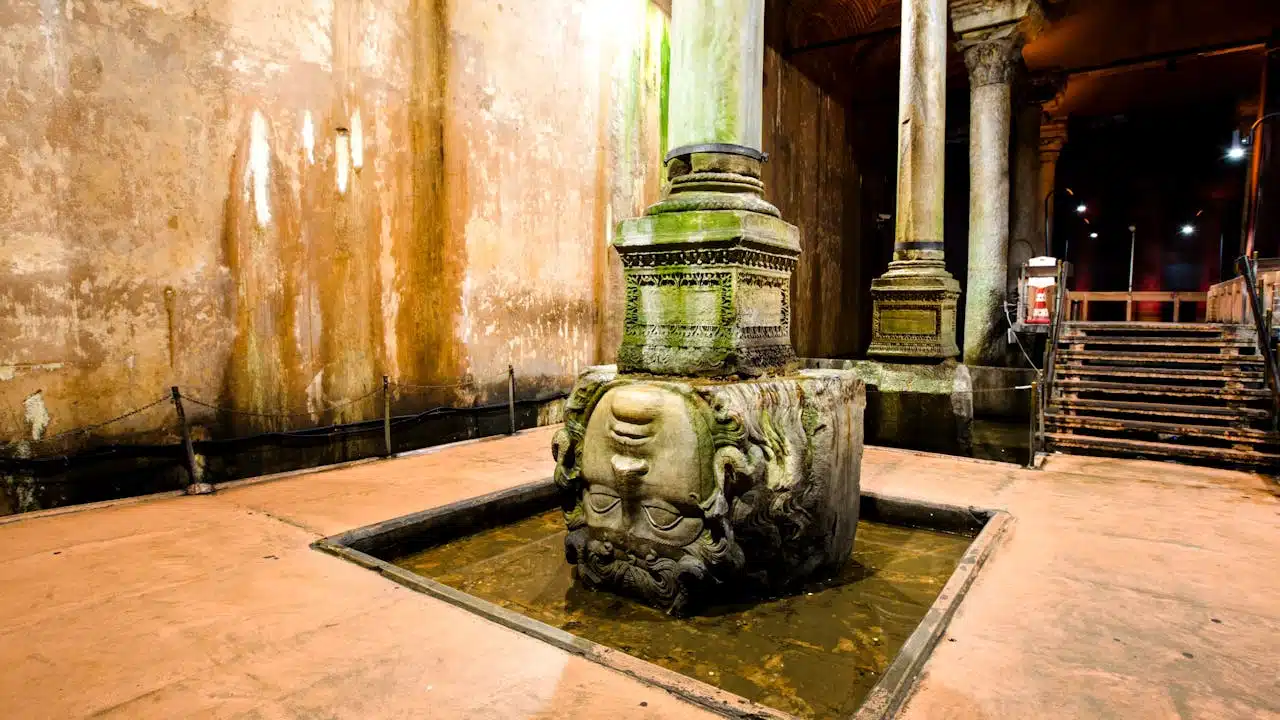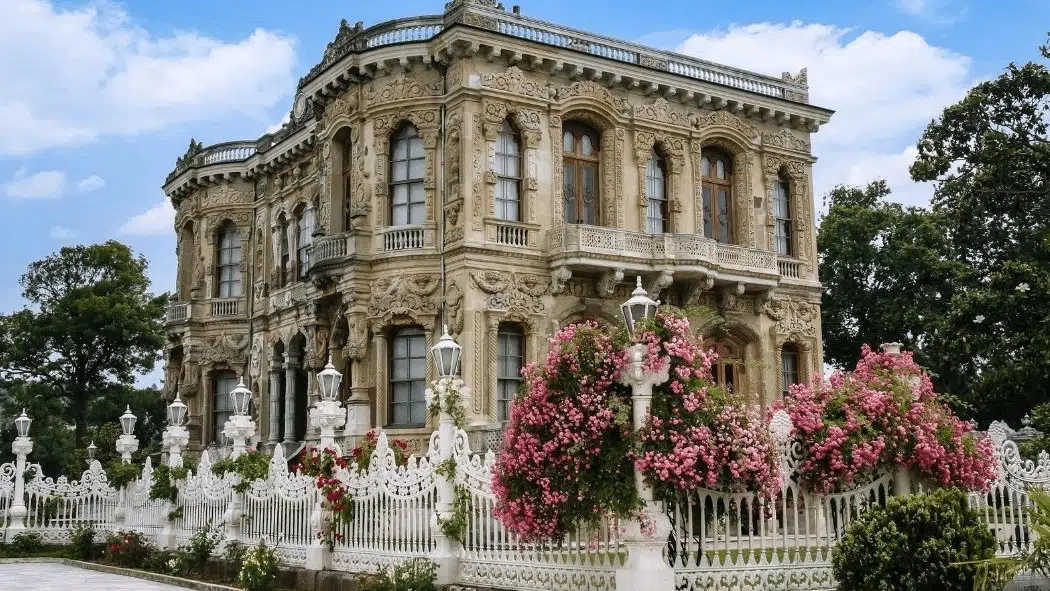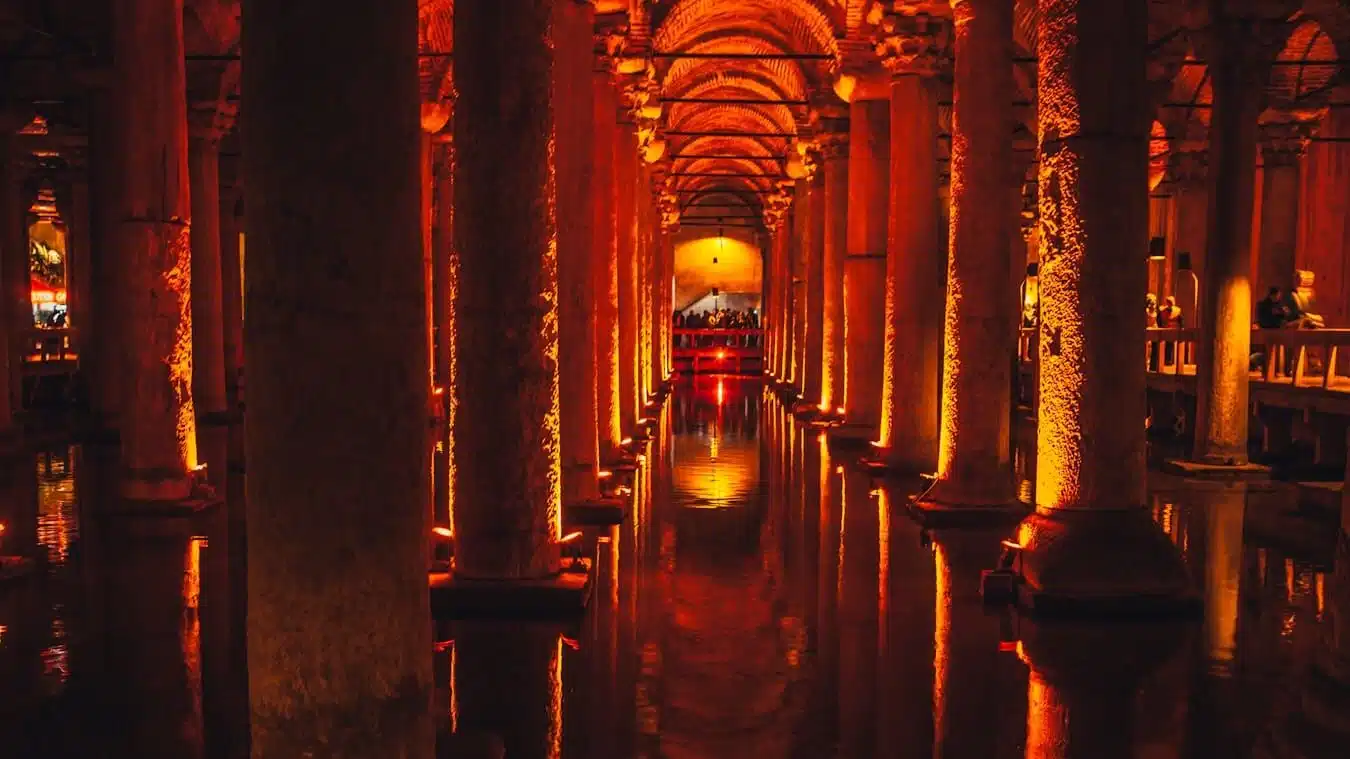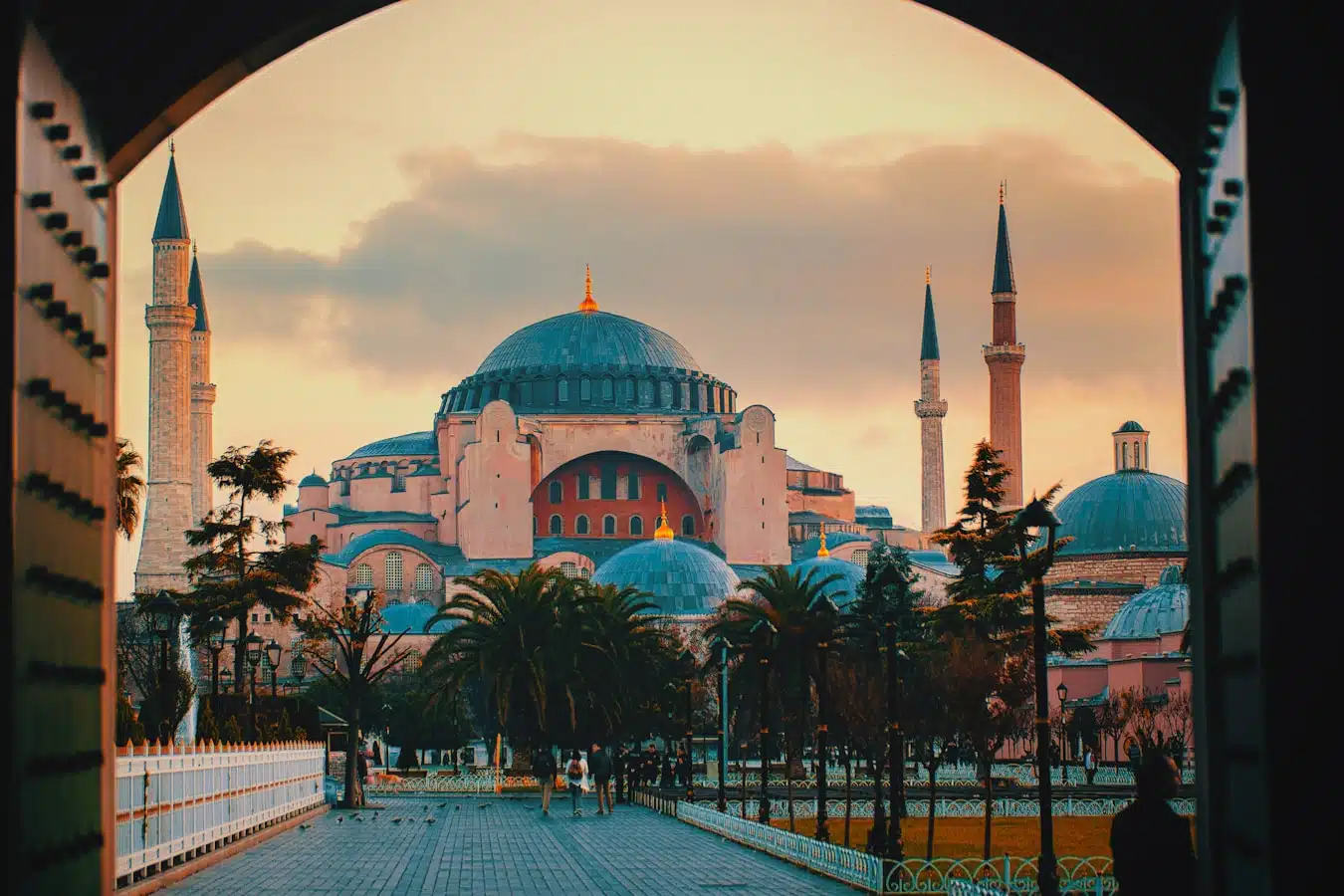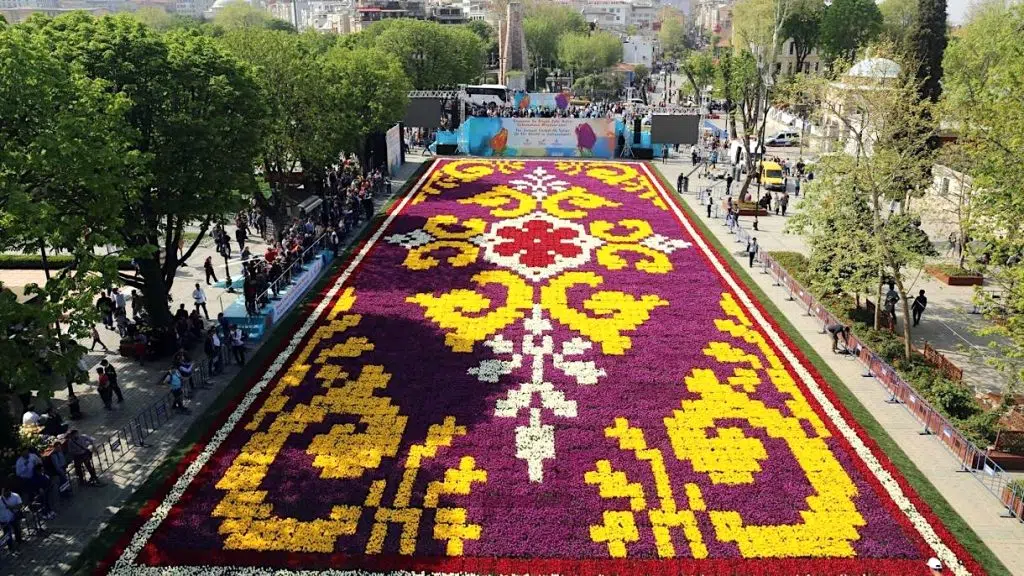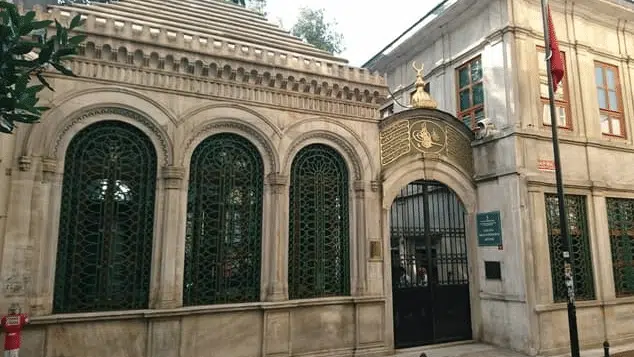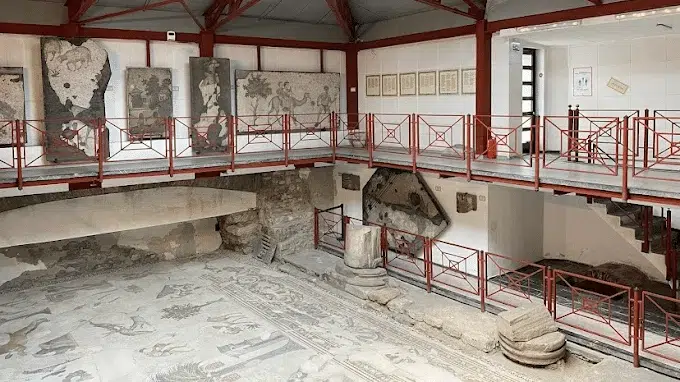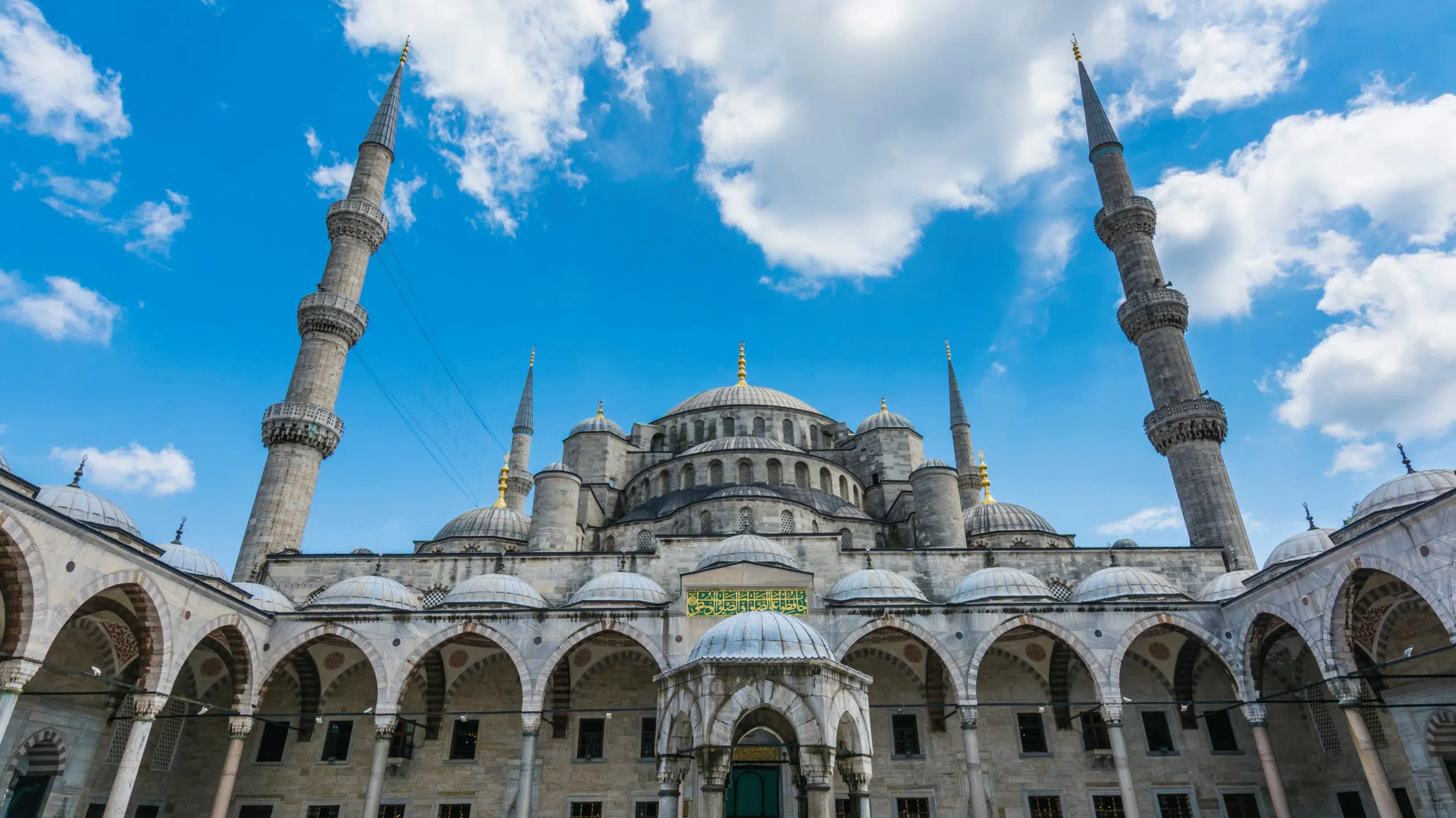Basilica Cistern Entrance Fee

The entrance fee for the Basilica Cistern typically costs around 350 Turkish Lira per person, but this can vary depending on currency fluctuations and seasonal adjustments. Discounts are often available for students and children.
For those with an Istanbul E-pass, the entrance fee is included as part of the pass’s benefits, offering significant savings. Visitors are encouraged to check the official website or ticket counters for the latest pricing information before planning their trip.
Plan Your Visit to the Basilica Cistern in Istanbul
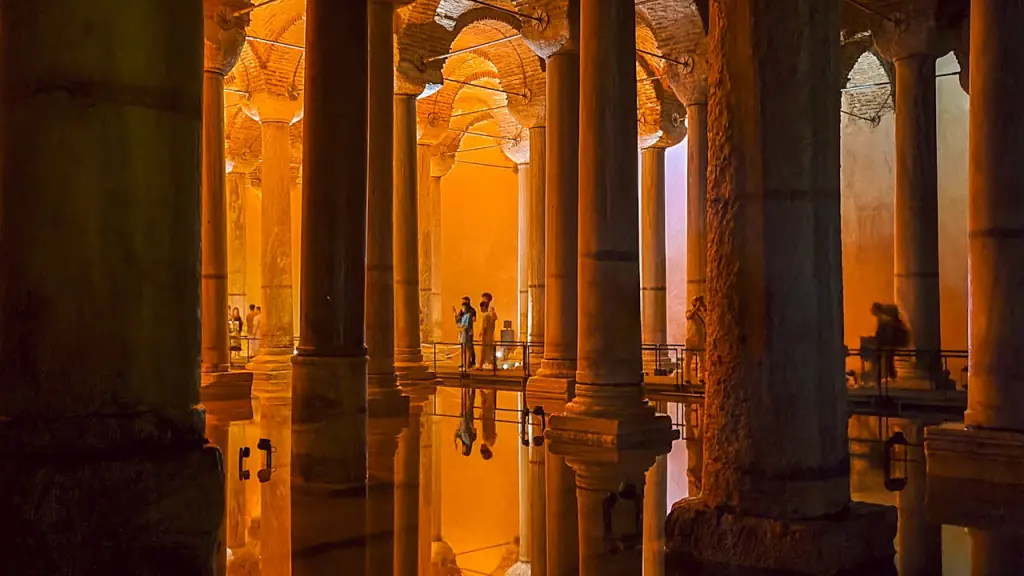
Planning a visit to the Basilica Cistern is straightforward and rewarding. Located in the heart of Istanbul’s historic Sultanahmet district, it is easily accessible by public transportation, including the tram to Sultanahmet Station.
Visitors should allocate at least an hour to explore the cistern and fully appreciate its historical and architectural significance. Purchasing tickets in advance or opting for an Istanbul E-pass can help you save time by skipping the ticket line.
Be sure to wear comfortable shoes, as the floor can be damp due to the water in the cistern, and consider visiting during off-peak hours for a more serene experience.
🎟️ BOOK YOUR BASILICA CISTERN TICKETS NOW! 🎟️
Online booking is easy and secure. Click the link below, choose your date, and confirm instantly:
⚠️ Don’t wait—these tours often sell out, especially on weekends and holidays!
Things You Should Know Before Visiting the Basilica Cistern

Before visiting the Basilica Cistern, it’s essential to understand its historical significance and unique atmosphere. The cistern is a massive underground water reservoir built during the Byzantine era, known for its intricate architecture and eerie yet mesmerizing ambiance.
Visitors should note that the cistern is dimly lit, which enhances its mystical appeal but may require careful navigation. Comfortable, non-slip footwear is recommended as the floors can be wet.
Planning your visit during non-peak hours can make the experience more serene, and purchasing tickets in advance or using an Istanbul E-pass can help you avoid long lines.
What Is the Basilica Cistern in Istanbul, and Why Is It Famous?
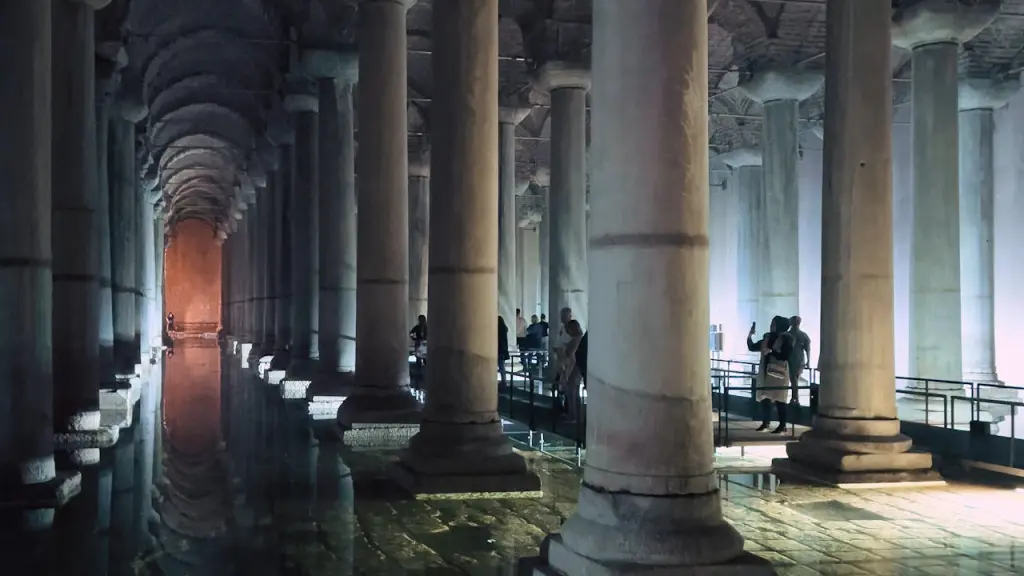
The Basilica Cistern, also known as Yerebatan Sarnıcı in Turkish, is one of Istanbul’s most iconic historical landmarks. Located near the Hagia Sophia, this massive underground structure was built to store and supply water to the city during the Byzantine era.
Spanning a vast area of 9,800 square meters, it is supported by 336 intricately designed columns. Its eerie yet mesmerizing atmosphere, enhanced by the dim lighting and reflection of the columns on the water, has made it a popular tourist attraction.
The site is also renowned for its Medusa heads, mysterious carvings that serve as column bases, attracting countless visitors intrigued by their legend and historical significance.
Why Was the Basilica Cistern Built, and What Was Its Purpose?

The Basilica Cistern was constructed to meet the water needs of ancient Constantinople, especially during sieges or periods of drought. It acted as a reservoir to store water sourced from the Belgrade Forest via a system of aqueducts, including the Valens Aqueduct.
This water was primarily used for the Great Palace of Constantinople and other nearby buildings. The cistern’s capacity of 80,000 cubic meters ensured a steady water supply for the city’s residents.
Its design and functionality reflect the advanced engineering skills of the Byzantine Empire and underscore its importance as a critical infrastructure during its time.
Who Constructed the Basilica Cistern, and When Was It Built?

The construction of the Basilica Cistern was commissioned by Byzantine Emperor Justinian I in the 6th century, around 532 AD. It was built following the Nika Riots, which destroyed much of Constantinople, including an earlier basilica on the same site.
The name “Basilica” comes from the large public square that previously existed above the cistern. The labor-intensive construction process involved thousands of slaves and recycled materials from ancient structures, including the columns, which exhibit diverse designs.
Today, it stands as a testament to the ingenuity and resilience of Byzantine architecture and engineering.
Unique Architectural Marvel of the Basilica Cistern

The Basilica Cistern stands out as an architectural marvel due to its innovative design and engineering ingenuity. Built in the 6th century, this massive underground water reservoir spans 9,800 square meters and is supported by 336 marble columns arranged in 12 rows.
Each column, approximately 9 meters tall, was sourced from various ancient structures, making the cistern a showcase of repurposed materials. Its vaulted brick ceilings, designed with waterproof mortar, demonstrate advanced Byzantine construction techniques.
The cistern’s ability to store 80,000 cubic meters of water highlights its critical role in sustaining Constantinople during times of siege or drought, making it a masterpiece of both form and function.
Construction and the Design of the Basilica Cistern

The construction of the Basilica Cistern was commissioned by Emperor Justinian I in 532 AD and required the labor of thousands of workers. The design incorporated recycled materials from various Roman and Greek ruins, giving the cistern its eclectic mix of column styles, including Ionic, Corinthian, and Doric capitals.
The cistern’s floor and walls were lined with waterproof mortar, ensuring its capacity to hold massive quantities of water. Its ingenious aqueduct system transported water from the Belgrade Forest to meet the city’s needs.
The combination of functionality, artistry, and repurposed materials underscores the Byzantine Empire’s mastery of architecture and resource management.
What Is the Significance of the Medusa Heads in the Basilica Cistern?
The Medusa heads in the Basilica Cistern are among its most enigmatic and fascinating features. Located at the base of two columns, one head is placed upside-down, and the other is positioned sideways.
These heads are believed to have been repurposed from earlier Roman structures, but their original purpose remains a mystery. According to legend, the upside-down and sideways orientations were intentional to nullify Medusa’s gaze, as she was thought to turn onlookers to stone.
While their exact origins and purpose are debated, these heads add an aura of myth and intrigue, making them a highlight for visitors and historians alike.

Ambiance of the Basilica Cistern
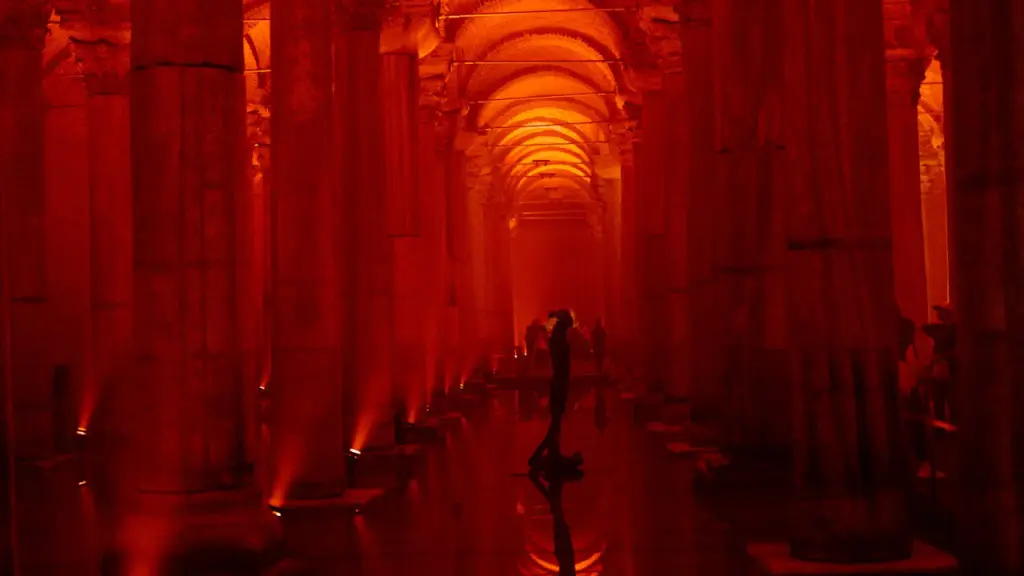
The Basilica Cistern’s lighting plays a significant role in creating its hauntingly beautiful ambiance. Soft, warm lights illuminate the towering columns, casting reflections on the shallow water that covers the floor.
This lighting highlights the cistern’s architectural details, including the carved column capitals and vaulted ceilings. The dim illumination also enhances the mystical atmosphere, making it a favorite for photographers and visitors seeking a unique experience.
The thoughtful placement of lights around the Medusa heads and other key features ensures that their historical and artistic significance is fully appreciated, further enriching the cistern’s allure.
Best Time to Visit the Basilica Cistern
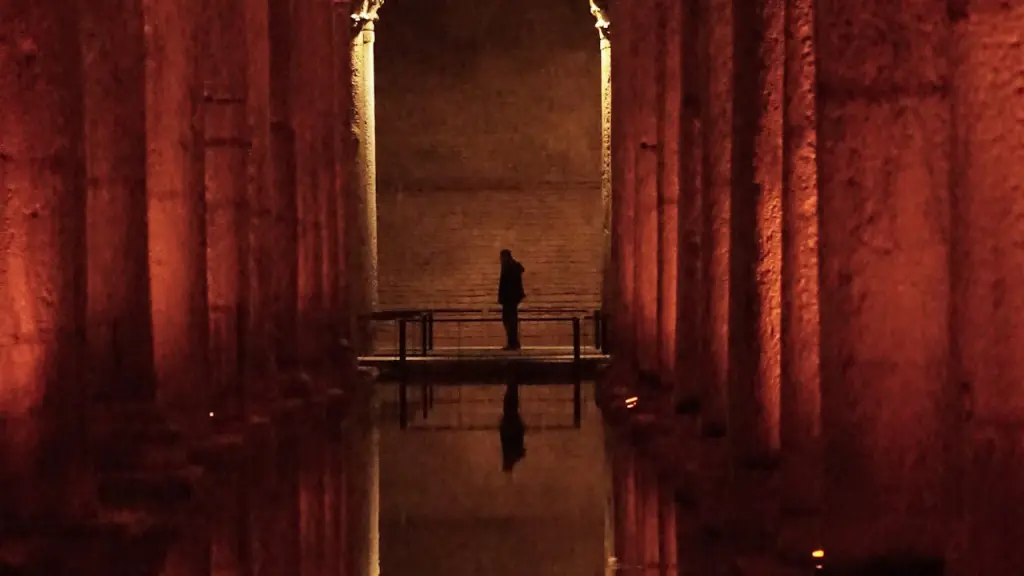
The best times to visit the Basilica Cistern are early in the morning or late in the afternoon, as these hours tend to have fewer crowds. Weekdays are generally less busy compared to weekends, making them ideal for a more tranquil visit.
Seasonal variations also affect the experience; visiting during Istanbul’s cooler months, such as autumn or spring, allows you to enjoy the cistern’s cool underground atmosphere without the rush of peak tourist seasons.
For photography enthusiasts, the dimly lit ambiance is most captivating when there is minimal foot traffic, allowing for uninterrupted shots.
Are There Guided Tours Available for the Basilica Cistern?
Yes, guided tours are available for the Basilica Cistern, and they provide an excellent way to deepen your understanding of this historic site. Professional guides share fascinating insights about the cistern’s construction, its role in Byzantine and Ottoman times, and the myths surrounding features like the Medusa heads. Many tours are offered in multiple languages to cater to international visitors. Alternatively, audio guides are also available for those who prefer a self-paced experience. Booking a guided tour in advance, especially through packages like the Istanbul E-pass, ensures a seamless and informative visit.
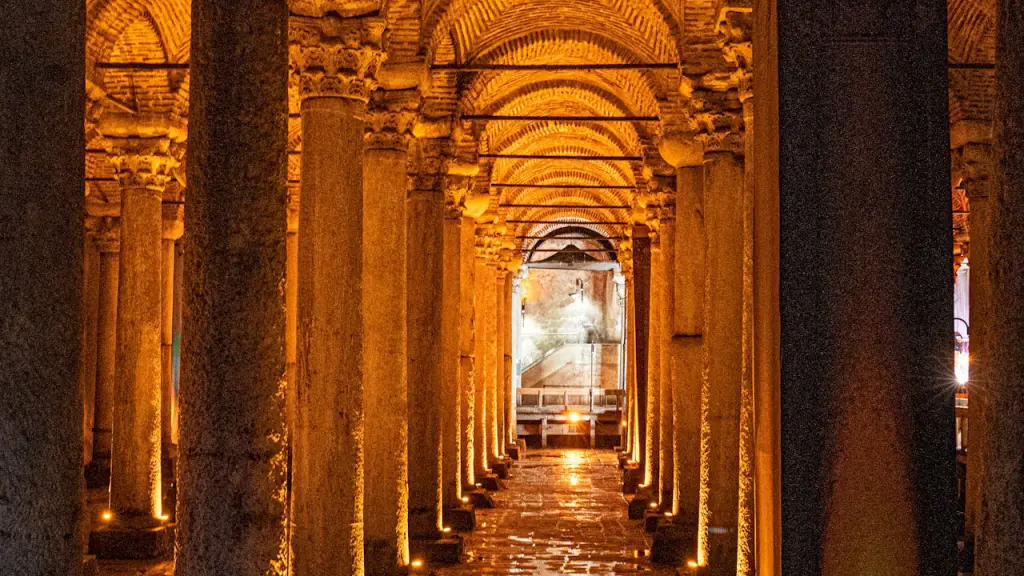
Is the Basilica Cistern Accessible for Visitors with Mobility Issues?
The Basilica Cistern is partially accessible for visitors with mobility challenges. While there are stairs leading down to the cistern, there are no elevators available, which may pose difficulties for wheelchair users or individuals with limited mobility. Once inside, the walkways are relatively even, but the damp surfaces may require caution. For a more accommodating experience, visitors with mobility concerns should consider contacting the site’s administration in advance to inquire about available assistance or alternative arrangements.
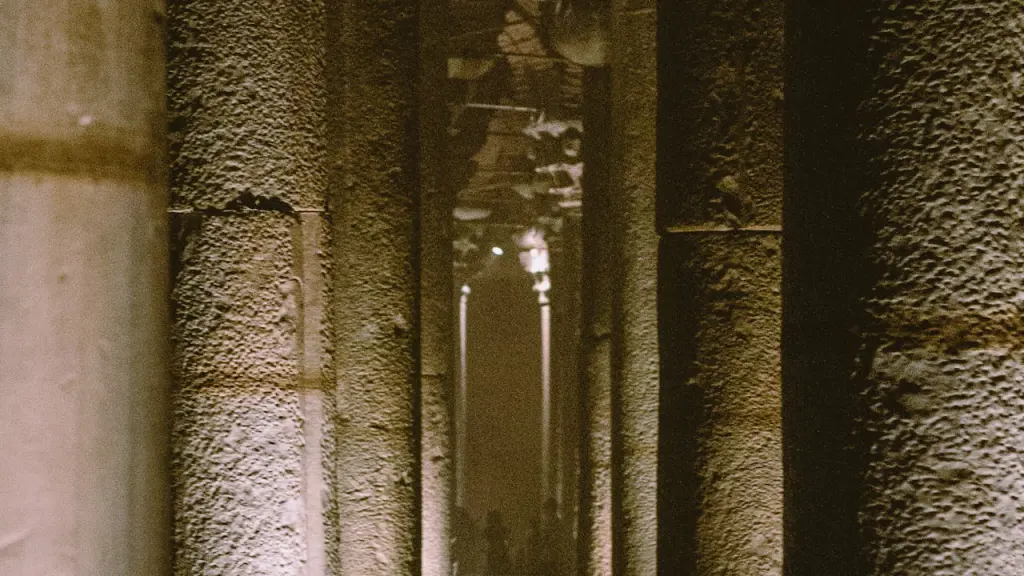
What Are the Nearby Attractions to Combine With a Basilica Cistern Visit?
The Basilica Cistern is located in Istanbul’s historic Sultanahmet district, making it easy to combine with other iconic landmarks. Within walking distance, you’ll find the Dolmabahce Palace, Hagia Sophia, the Blue Mosque, and the Topkapi Palace, each offering a unique glimpse into Istanbul’s rich history. For a more comprehensive experience, consider exploring the Grand Bazaar, which is a short tram ride away, or strolling through the Gülhane Park nearby. These attractions complement a visit to the cistern, allowing you to immerse yourself in the cultural and historical fabric of the city.
Entrance to Topkapi Palace and Blue Mosque is free with Istanbul E-pass guided tours.
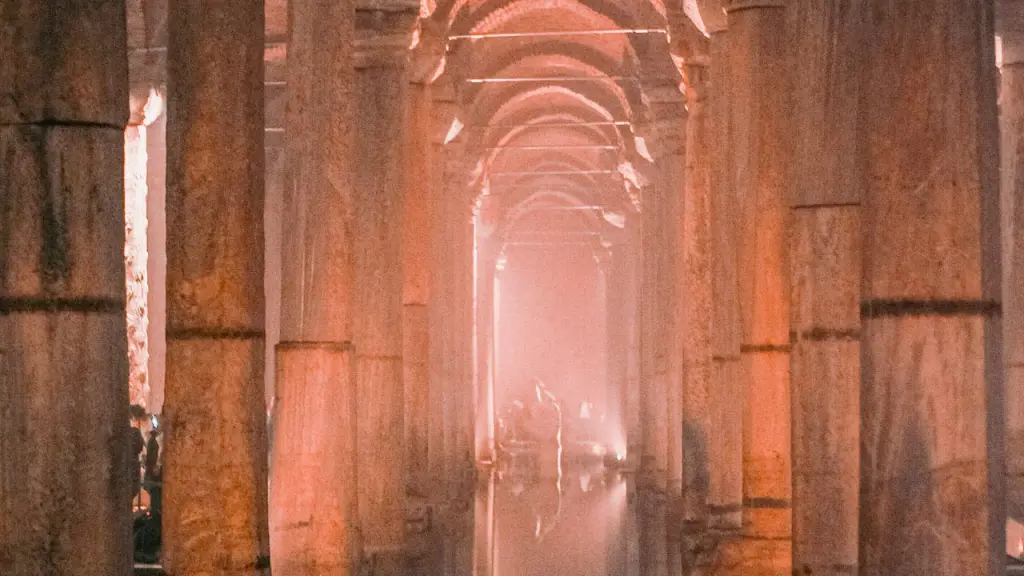
How Long Does It Take to Explore the Basilica Cistern Fully?
On average, it takes about 30 to 60 minutes to explore the Basilica Cistern fully. This timeframe allows you to walk through the cistern, admire the rows of ancient columns, and learn about its history, including the mysterious Medusa heads. Visitors participating in guided tours may spend a bit longer, as the guides provide detailed insights into the cistern’s architecture and purpose. If you plan to take photographs or enjoy the ambiance at a leisurely pace, allocating an hour ensures a fulfilling visit.
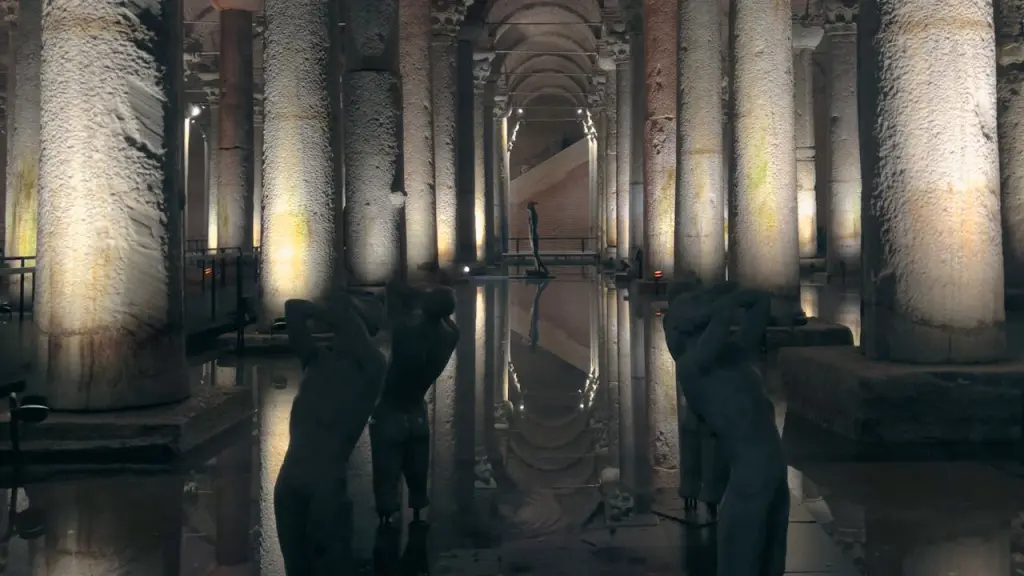
What Role Did the Basilica Cistern Play in Byzantine and Ottoman History?
The Basilica Cistern played a crucial role in the water supply systems of both the Byzantine and Ottoman Empires. Built during the reign of Emperor Justinian I in the 6th century, this underground reservoir provided a reliable water source to the Great Palace of Constantinople and other surrounding buildings. It stored water transported via aqueducts from the Belgrade Forest, ensuring a steady supply even during sieges or periods of drought. When the Ottoman Empire took control of Constantinople, the cistern’s significance declined as newer water systems were developed, but it continued to serve as a reserve during emergencies. Today, the Basilica Cistern in Istanbul stands as a testament to the ingenuity of ancient engineering.

Why Is the Basilica Cistern Considered a Must-Visit Site in Istanbul?
The Basilica Cistern is considered a must-visit site in Istanbul due to its stunning architecture, historical significance, and unique atmosphere. Its forest of 336 columns, illuminated by soft, glowing lights, creates an ethereal experience that captivates visitors. The cistern offers a rare glimpse into the ingenuity of Byzantine engineering, blending functionality with artistic beauty. Additionally, the site’s mysterious ambiance and legends, such as the upside-down Medusa head sculptures, make it a fascinating destination for history enthusiasts and casual tourists alike. A visit to the Basilica Cistern provides a deeper understanding of Istanbul’s layered history and cultural richness.

What Stories and Legends Surround the Basilica Cistern?
The Basilica Cistern is steeped in stories and legends that add to its mystique. The most famous tale revolves around the two Medusa head sculptures found at the base of two columns. One head is placed upside down, while the other lies on its side.
Although their exact origins remain unknown, legends suggest they were repurposed from an ancient Roman temple and intentionally positioned this way to nullify Medusa’s mythical gaze. Another story highlights the cistern’s role as a secret refuge during turbulent times in Byzantine history.
These captivating myths and historical anecdotes make the Basilica Cistern in Istanbul an alluring destination for storytellers and history lovers alike.
